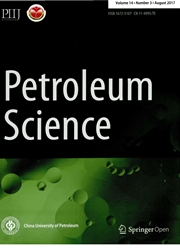

 中文摘要:
中文摘要:
当钻是正在代替在液体采样在一个相对短的时间追随者在哪个被进行测试的常规压力的一种创新技术时,测试钻的形成。在这时候,泥侵略刚开始了, mudcake 没完全形成,形成压力不是稳定的。因此,学习 downhole 的影响是重要的测试的压力和液体采样上的动态环境。这份报纸使用二分阶段执行的油水学习 mudcake 质量和泥的影响的有限元素模型过滤在不同渗透的水库的过份给与压力,预告测验和采样上的侵略。然而,学习仅仅是因为有水的盒子在 wellbore 基于泥。结果说明 mudcake 质量在过份给与压力和液体采样上有重要影响,当时泥的水平过滤侵略在测试的压力和采样上有强壮的影响。另外,在原处测试的形成压力作为泥在低渗透水库是更困难的过滤侵略更深因此降级液体采样的质量。最后,来自阿拉斯加人诺思斜坡上的一个油领域的一个领域例子被举验证 downhole 的效果的数字研究当钻时,测试的形成上的动态条件。
 英文摘要:
英文摘要:
Formation testing while drilling is an innovative technique that is replacing conventional pressure testing in which the fluid sampling is conducted in a relatively short time following the drilling. At this time, mud invasion has just started, mudcake has not formed entirely and the formation pressure is not stable. Therefore, it is important to study the influence of the downhole dynamic environment on pressure testing and fluid sampling. This paper applies an oil-water two phase finite element model to study the influence of mudcake quality and mud filtrate invasion on supercharge pressure, pretest and sampling in the reservoirs of different permeability. However, the study is only for the cases with water based mud in the wellbore. The results illustrate that the mudcake quality has a significant influence on the supercharge pressure and fluid sampling, while the level of mud filtrate invasion has a strong impact on pressure testing and sampling. In addition, in-situ formation pressure testing is more difficult in low permeability reservoirs as the mud filtrate invasion is deeper and therefore degrades the quality of fluid sampling. Finally, a field example from an oil field on the Alaskan North Slope is presented to validate the numerical studies of the effects of downhole dynamic conditions on formation testing while drilling.
 同期刊论文项目
同期刊论文项目
 同项目期刊论文
同项目期刊论文
 Numerical simulation of non-Archie electrophysical property of saturated rock with lattice Boltzmann
Numerical simulation of non-Archie electrophysical property of saturated rock with lattice Boltzmann Numerical simulation of response for wireline formation tester in permeability anisotropic formation
Numerical simulation of response for wireline formation tester in permeability anisotropic formation 期刊信息
期刊信息
